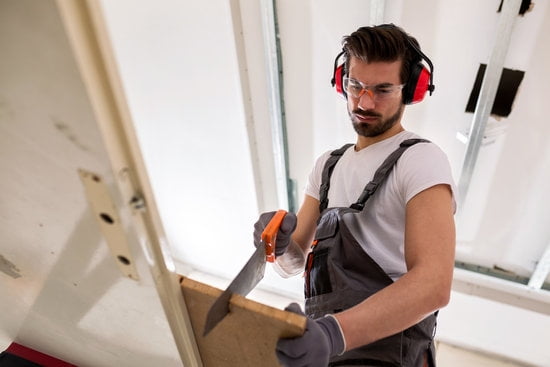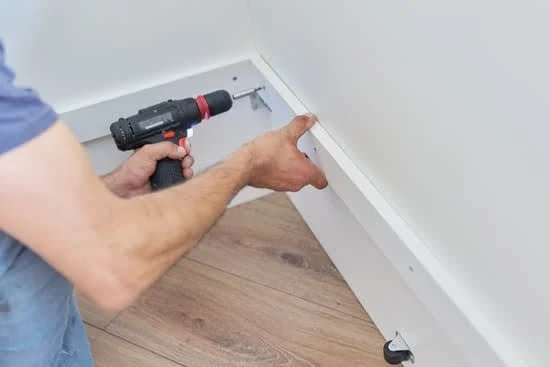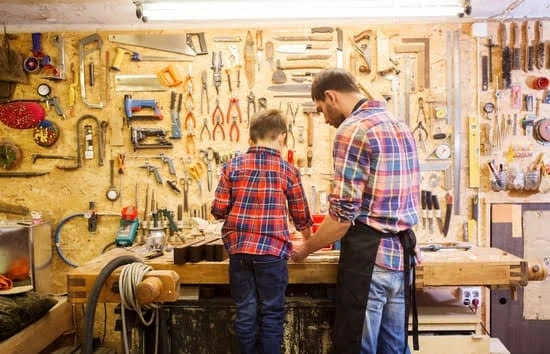There are many different ways to join two pieces of wood together, but not all of them are created equal. Some joints are stronger and more durable than others, and some are more difficult to make. Here are nine essential woodworking joints, ranked from the easiest to the most difficult.
1. Butt Joint
The butt joint is the simplest and weakest of all the woodworking joints. It is simply two pieces of wood joined together at a right angle, with no overlap. Because it is so simple and weak, the butt joint is generally only used for joining relatively thin pieces of wood.
2. Finger Joint
The finger joint is similar to the butt joint, but it has a small overlap between the two pieces of wood. This makes the joint stronger and more durable. The finger joint is commonly used in furniture making, because it is strong and relatively easy to make.
3. Dovetail Joint
The dovetail joint is one of the most popular and strongest woodworking joints. It is made by overlapping two pieces of wood and then cutting a series of dovetails into the joint. The dovetail joint is very strong and resistant to wear and tear.
4. Mortise and Tenon Joint
The mortise and tenon joint is one of the most common and strongest woodworking joints. It is made by cutting a hole (the mortise) in one piece of wood, and then cutting a matching piece of wood (the tenon) to fit into the hole. The mortise and tenon joint is very strong and resistant to wear and tear.
5. Miter Joint
The miter joint is made by cutting two pieces of wood at a 45-degree angle and then joining them together. The miter joint is strong and resistant to wear and tear, but it is not as strong as the mortise and tenon joint.
6. T-joint
The T-joint is made by cutting two pieces of wood at a 90-degree angle and then joining them together. The T-joint is strong and resistant to wear and tear, but it is not as strong as the mortise and tenon joint.
7. Lap Joint
The lap joint is made by overlapping two pieces of wood and then joining them together. The lap joint is not as strong as the mortise and tenon joint, but it is strong and resistant to wear and tear.
8. Slot Joint
The slot joint is made by cutting a slot in one piece of wood and then joining it to another piece of wood with a tongue. The slot joint is not as strong as the mortise and tenon joint, but it is strong and resistant to wear and tear.
9. Butt Joint With Glue
The butt joint with glue is the simplest and weakest of all the woodworking joints. It is simply two pieces of wood joined together at a right angle, with no overlap. Because it is so simple and weak, the butt joint with glue is generally only used for joining relatively thin pieces of wood.
Precision Woodworking Square
A woodworker’s square is an essential tool for precise measurements. It is used to check the accuracy of angles, to mark out lines parallel to an edge, and to check the flatness of a surface.
There are many different types of woodworking squares available on the market, but the most common type is the Carpenter’s Square. This type has a metal frame with two arms that are adjustable to different angles, and a metal blade that is attached to one of the arms. The blade is usually engraved with inch or metric measurements.
The most important thing to look for when choosing a woodworking square is accuracy. The square should be able to accurately measure angles, and the blade should be straight and true.
One way to test the accuracy of a woodworking square is to use it to measure the length of an edge. Place the edge against the blade of the square, and then slide the square down the edge. If the edge is exactly the length of the blade, the square is accurate. If the edge is longer or shorter than the blade, the square is not accurate.
Another way to test the accuracy of a woodworking square is to use it to mark out a line parallel to an edge. Place the edge of the square against the edge of the wood, and then mark out a line using the blade of the square. If the line is parallel to the edge, the square is accurate. If the line is not parallel to the edge, the square is not accurate.
The final way to test the accuracy of a woodworking square is to use it to check the flatness of a surface. Place the square against the surface, and then check to see if the surface is flat. If the surface is not flat, the square is not accurate.
Woodworking Plans Extension Dining Table
-A dining table is a piece of furniture that is typically used to seat two or more people in the form of a rectangular table.
-Dining tables come in a variety of shapes and sizes, but the most common shape is a rectangular table.
-A dining table can be used for a variety of purposes, including eating, working, and playing games.
-When choosing a dining table, it is important to consider the size of the room, the shape of the table, and the type of table.
-It is also important to consider the materials from which the table is made.
-When choosing a dining table, the first thing to consider is the size of the room. The table should be large enough to comfortably accommodate the people who will be sitting at it.
-The next thing to consider is the shape of the table. The most common shape is a rectangular table, but there are a variety of other shapes available, including square, oval, and round.
-The last thing to consider is the type of table. There are a variety of different types of dining tables available, including traditional, modern, and transitional.
-It is also important to consider the materials from which the table is made. The most common materials are wood, metal, and glass.
Woodworking Workshop Designs
Creating a woodworking workshop is a process that starts with understanding your needs and what you want to accomplish in the space. Once you have a plan, you can start designing the workshop to fit your specific needs.
The first step is to consider the space you have available. Most workshops are in the garage, basement, or a small outbuilding. You need to make sure the space is large enough to accommodate the tools and equipment you plan to use. It’s also important to have enough space to move around comfortably.
The next step is to decide what type of workshop you want. There are three basic types: woodworking, metalworking, and combination.
Woodworking workshops are designed for people who want to make furniture and other wood projects. The focus is on woodworking tools and equipment, including saws, routers, and sanders.
Metalworking workshops are designed for people who want to work with metal. This type of workshop usually has a forge, anvil, and a variety of metalworking tools.
Combination workshops are a mix of woodworking and metalworking tools and equipment. They are a good choice for people who want to do both types of projects.
Once you have decided on the type of workshop, you need to start designing the layout. The layout will depend on the type of workshop and the space you have available.
Woodworking workshops typically have a workbench at one end of the space and a tool storage area at the other end. The workbench should be large enough to accommodate the projects you plan to work on. The tool storage area should be large enough to store all of your tools and equipment.
Metalworking workshops usually have a workbench and a tool storage area, but the layout is usually a little different. The workbench is usually in the middle of the space and the tool storage area is at one end. This layout is better for people who want to move around the workshop more easily.
Combination workshops usually have a workbench and a tool storage area in each area. This is the best layout for people who want to use both the woodworking and metalworking tools.
Once you have designed the layout of the workshop, you need to start thinking about the electrical and plumbing. You will need to install electrical outlets and a plumbing system for the workshop.
The last step is to install the workshop cabinets. Cabinets are a great way to organize the workshop and keep everything in its place. There are a variety of cabinets to choose from, including base cabinets, wall cabinets, and countertops.
Once the workshop is designed and the cabinets are installed, it’s ready for use. You can start working on your woodworking or metalworking projects.
Psi Woodworking Pen Kits
are precision machined from a single piece of aircraft grade aluminum. The body and cap are knurled for a sure grip and the clip is stainless steel.
The pen has a Parker style refill with a black ink cartridge.
The pen measures 5-1/4″ long and weighs 1.4 oz.
The pen kit is available in several finishes including brushed aluminum, black anodized, and polished chrome.
The pen kit is also available with a gold finish.
The pen kit is a great gift for the executive or the professional.

Hi everyone! I’m a woodworker and blogger, and this is my woodworking blog. In my blog, I share tips and tricks for woodworkers of all skill levels, as well as project ideas that you can try yourself.





